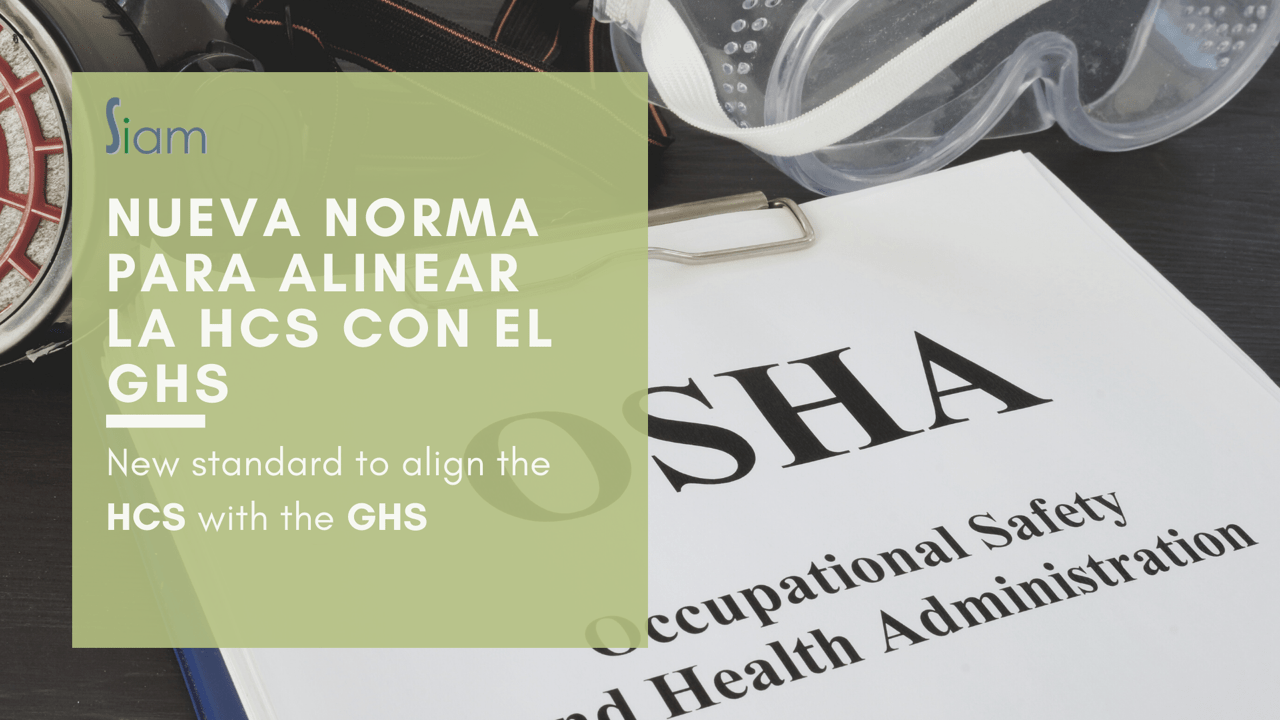
The Hazard Communication Standard (HCS or HAZCom) aligns with the Globally Harmonized System of Classification and Labeling of Chemical Substances (GHS) (revision 7)
New standard to align the HCS with the GHS
US Occupational Safety and Health Administration (OSHA) issues a proposed rule to update the current standard
The Occupational Safety and Health Administration (OSHA) of the United States Department of Labor has just issued a Notice of Proposed Rulemaking (NPRM) to amend the Hazard Communication Standard - HCS (§ 1910.1200).
The purpose of the new regulation is to ensure that the occupational risks associated with the use of hazardous chemicals, both for products manufactured in the United States and for those that have been imported, are correctly classified and that the relevant information can be easily accessible to employers and employees.
The new requirements of the Hazard Communication Standard (HCS or HAZCom) are also an attempt to maintain conformity with the United Nations Globally Harmonized System of Classification and Labeling of Chemicals (GHS) (revision 7), align certain provisions with Canada and other U.S. agencies, and address issues that have developed since implementation of the 2012 standard.
The basic regulatory framework of the HCS will remain the same, which implies that:
- •Chemical manufacturers and importers are responsible for providing information about the identities and hazards of chemicals they produce or import.
- •● All employers with hazardous chemicals in their workplaces are required to have a hazard communication program, and provide information to employees about their hazards and associated protective measures.
However, the new proposed rule wants to improve and increase the protection of workers who interact with dangerous chemicals through different lines of action, with the aim of:
- 1. Providing additional clarification of existing regulatory requirements
- 2. Incorporating new hazard classes and categories
- 3. Improving and streamlining precautionary statements
- 4. Facilitating international trade through increased alignment
If you want more information and read the full document of the new proposed provision, you can do so at this link.
